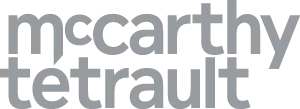- within Food, Drugs, Healthcare and Life Sciences topic(s)
- in Europe
- with Senior Company Executives, HR and Finance and Tax Executives
- with readers working within the Accounting & Consultancy, Healthcare and Law Firm industries
Healthcare continues to be a prominent topic of public debate. However, increased attention has also led to a rise in misinformation concerning pharmaceutical products. Such false or misleading statements can harm the public and damage the reputations of companies whose products are targeted. Depending on the nature of the statements and the context in which they are made, the author or speaker may face potential liability to the applicable company for defamation.
Drug-related misinformation may be Defamation
In Ontario, a plaintiff bringing a defamation action must establish three things: (i) the statement was defamatory (e.g., the statement would tend to lower the plaintiff's reputation in the eyes of a reasonable person); (ii) the words in fact referred to the plaintiff; and (iii) that the words were published (e.g., they were communicated to at least one identifiable person other than the plaintiff)1. Once these elements are proven, the onus shifts to the defendant to establish a viable defence to avoid liability and have the action dismissed.
False statements about a drug product may satisfy the first element of the legal test. For example, spreading misinformation, such as claiming without evidence that a drug causes harm, can mislead patients and undermine public confidence in the product. This, in turn, may damage the reputation of the company that manufactures and/or markets the product and potentially result in financial loss.
With respect to the second element, identifying a specific pharmaceutical company in the impugned statement will typically be sufficient to show the words referred to the plaintiff. However, if only a brand name or product is mentioned, whether this element is met will depend on the context.2
The third element, publication, is generally satisfied if the statement is communicated, whether online or in person, to at least one identifiable individual other than the plaintiff.
The available defences may not apply
If the plaintiff establishes the required elements, the onus shifts to the defendant to advance a valid defence to avoid liability.3 Several defences may be available, including:
- Justification (truth). A defendant will not be liable if they can prove that the allegedly defamatory statement was true.4
- Fair comment, which applies where: (i) the
comment was on a matter of public interest; (ii) the comment was
based on fact; (iii) the comment was recognizable as comment; (iv)
the comment, objectively, could have been expressed by anyone on
the proven facts; and (v) the defendant was not motivated by
malice.5
- Malice, in the context of defamation law, is present where an individual publishes a statement: (i) knowing it to be false; or (ii) recklessly indifferent to its veracity; or (iii) for the dominant purpose of injuring the plaintiff because of spite or animosity; or (iv) for some other dominant purpose that was improper or indirect or, if the occasion is privileged, for a dominant purpose not related to the occasion.6
- Qualified privilege, which attaches to an occasion where the person who makes a communication had a legal, social, moral, or personal interest or duty to make it to the person to whom it was made, and the person to whom it was made had a corresponding interest or duty in receiving it.7
- Responsible communication on matters of public interest, which requires that: (i) the publication was on a matter of public interest; and (ii) the publication was responsible (e.g., the defendant diligently tried to verify the allegations).8
If a defendant cannot prove the truth of their statements, such as where no credible evidence supports the claim, liability may follow. Moreover, if the defendant knew or ought to have known the statement was false but published it anyway, that would satisfy the test for malice, and fair comment, responsible communication, and qualified privilege would not be available defences.
Companies can consider seeking a remedy
Pharmaceutical companies invest heavily in developing products that improve patient health. False or misleading statements about these products can erode public trust, damage reputations, and ultimately harm patients. In today's environment of rapid information sharing and limited fact-checking, a company's reputation can be undermined quickly. Where misinformation causes reputational or financial harm, companies may pursue legal remedies, including injunctive relief to stop the publication and damages to compensate for resulting losses.
Footnotes
1 Bent v. Platnick, 2020 SCC 23 at para 92.
2 Grant v. Cormier-Grant, [2001] O.J. No. 3851, 56 O.R. (3d) 215 at para 23; Bent v. Platnick, 2020 SCC at para 95; Armstrong v. Corus Entertainment Inc., 2018 ONCA 689 at paras 62 and 66.
3 Grant v. Torstar Corp, 2009 SCC 61 at para 28.
4 Hamer v. Jane Doe, 2024 ONCA 721 at para 81.
5 Hansman v. Neufeld, 2023 SCC 14 at para 96.
6 Hansman v. Neufeld, 2023 SCC 14 at para 115.
7 Bent v. Platnick, 2020 SCC 23 at para 121.
8 Hamer v. Jane Doe, 2024 ONCA 721 at para 86.
To view the original article click here
The content of this article is intended to provide a general guide to the subject matter. Specialist advice should be sought about your specific circumstances.





